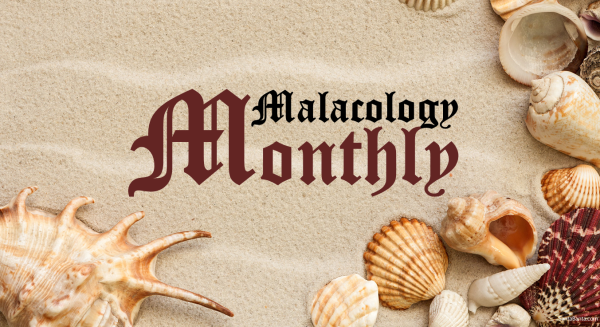
Like seashells but are sick of social media? Hate Facebook but need a hearty dose of marine invertebrates? Want a bigger malacological meal rather than tiny tidbits of mollusk-based science? Do not worry, you can get all of the “Malacology Monday” posts from the Deep Sea News Facebook page right here on the official DSN website in a tidy & convenient monthly digest without submitting to The F-Book. Here’s what happened last month:
Malacology Monday starts big, really big.
Syrinx auranus, alternately the Australian Trumpet, the Golden Trumpet, and the False Trumpet is the world’s largest living shelled gastropod. This snail is rumored to reach lengths of up to a meter long, but research by members of Deep Sea News can only verify the largest as 72.2 cm (2.36 feet). This specimen from Indonesia is merely 58.2 cm, still nearly two feet in length. What does a snail this size eat? These carnivores tackle large polycheate worms that may grow over a meter in length.
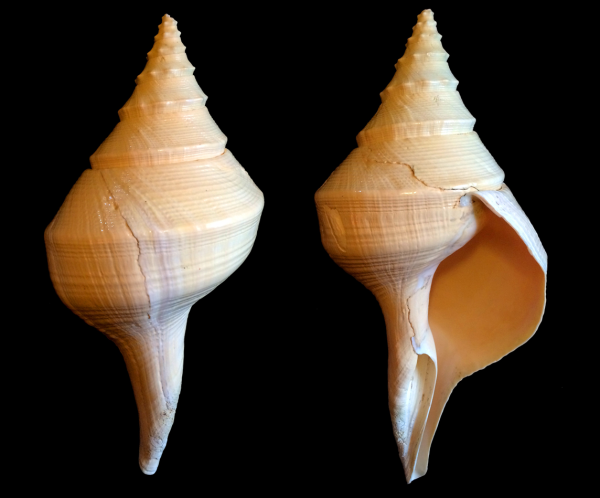
Cloth of Gold, Cloth of…Murder!
In a 1972 episode of Hawaii Five-0, this species of marine snail was used as a murder weapon by a grieving father avenging the death of his daughter at the hands of seedy pornographers. While cone shells have a specialized harpoon & hypodermic needle-like apparatus to deliver toxins to kill their prey, most species are relatively harmless to humans. But some cone species, like the Cloth of Gold, or Textile Cone (Conus textile), can potentially deliver a fatally paralyzing dose of conotoxin to a person handling a live one. However, death can be quite slow, unlike the near-instantaneous demise depicted by those lowlife criminal scum. But not wanting to get nabbed by McGarrett, the mollusk-wielding murderer then turns the venomous gastropod on himself, and the scene fades, with his lifeless body sinking below the placid Oahu waters. Cue the 5-0 theme music…
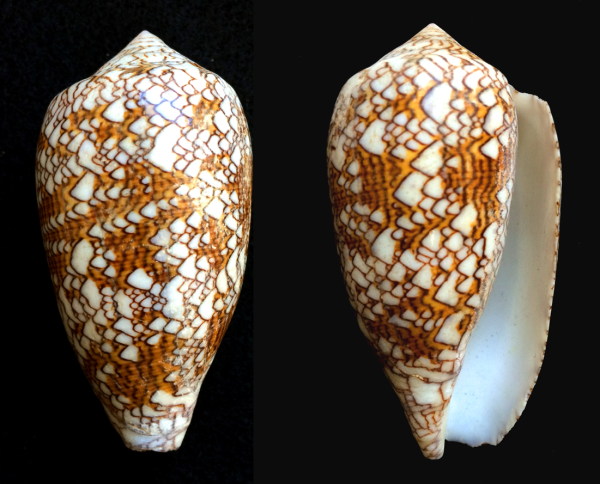
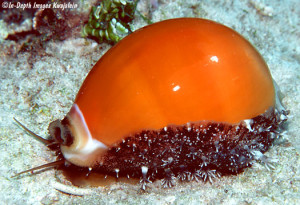
Bulbous Bling
The Golden Cowrie (Lyncina aurantium) once adorned the kings of Melanesia, and were used as status symbols and units of trade. Their simple beauty and apparent rarity later made them highly sought by museums and private collectors alike, with the shells fetching hundreds of dollars each. It was their cryptic nature and inaccessibility that kept this species safe for a while. Once it was discovered that they were nocturnal, and inhabited the deeper outer reefs from 30-40 meters, they became targeted for the international shell trade. In in some areas, especially smaller islands in the Philippines, specialized Golden Cowrie divers collected them by the hundreds, driving their prices down yet causing local populations of Golden Cowries to plummet. Conservation and management plans are being considered in some areas of the southwest Pacific and Indian Ocean range, but so little is known about their biology that current management plans may not be effective.
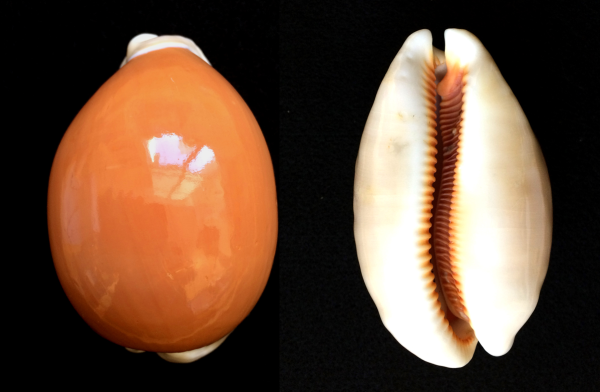
Ceremonial Conch
The rather unremarkable looking shell below is actually quite remarkable in two ways. The 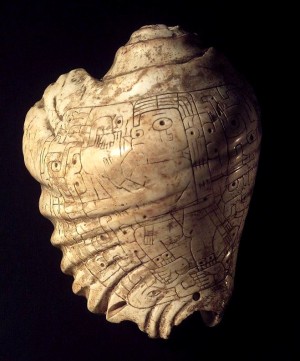 incredibly thick shell of the Eastern Pacific Giant Conch (Lobatus galeatus) makes it one of the heaviest marine gastropods for its size. But this particular specimen had its spire cut off and made into a pututo, a ceremonial trumpet, and was found in a burial chamber of a lower class member of the Chimu culture of the north-central coast of Peru, about 1300 A.D. Higher-class people often had ornately-carved shells, sometimes with inlays of gems, as part of their burial offerings. The Giant Conch on the right from the Brooklyn Museum is from the older Chavin culture of Peru (about 300 BC) and shows a carving of a man blowing a conch as part of a ceremonial ritual.
incredibly thick shell of the Eastern Pacific Giant Conch (Lobatus galeatus) makes it one of the heaviest marine gastropods for its size. But this particular specimen had its spire cut off and made into a pututo, a ceremonial trumpet, and was found in a burial chamber of a lower class member of the Chimu culture of the north-central coast of Peru, about 1300 A.D. Higher-class people often had ornately-carved shells, sometimes with inlays of gems, as part of their burial offerings. The Giant Conch on the right from the Brooklyn Museum is from the older Chavin culture of Peru (about 300 BC) and shows a carving of a man blowing a conch as part of a ceremonial ritual.
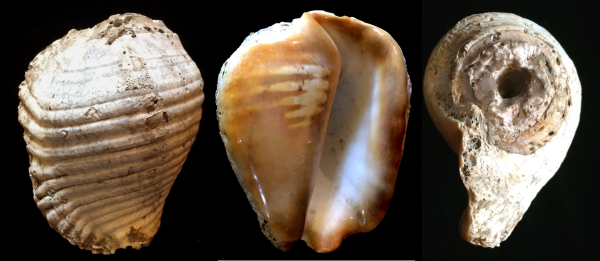 All photos, unless otherwise noted, are by Douglas J. Long/Deep Sea News.
All photos, unless otherwise noted, are by Douglas J. Long/Deep Sea News.

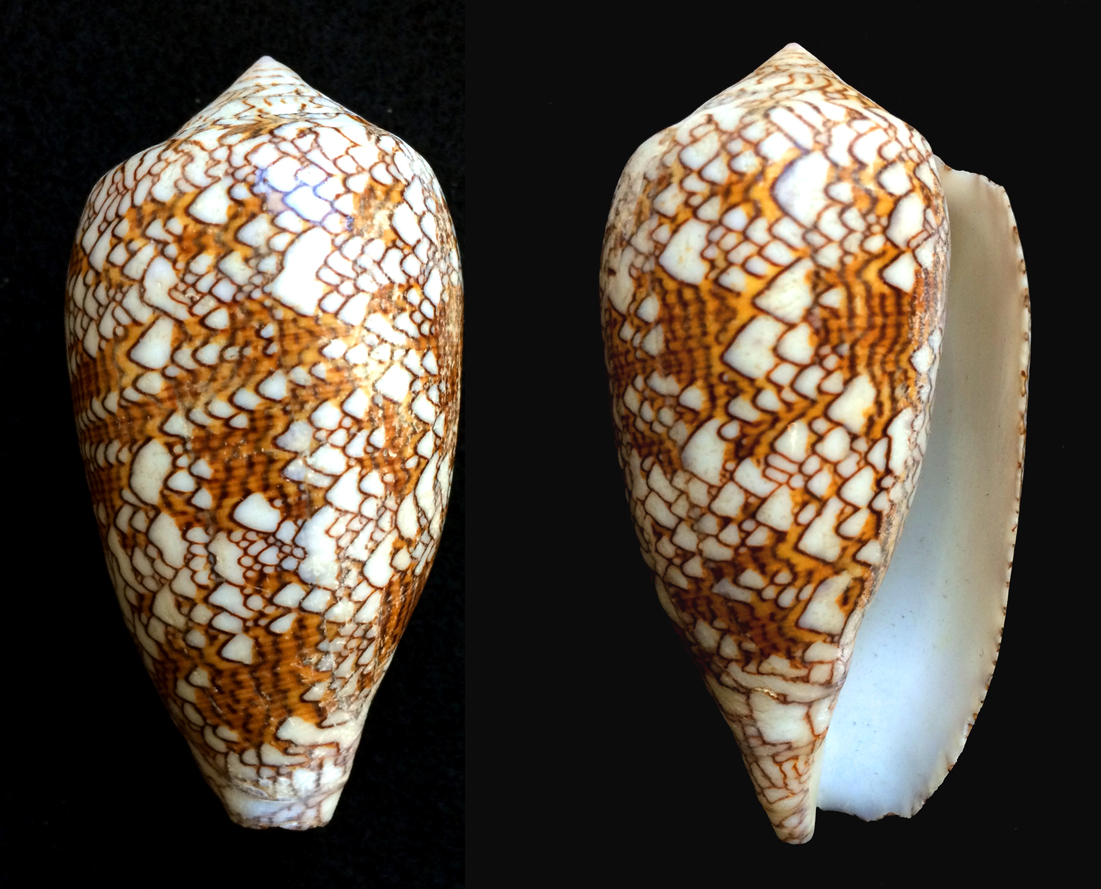
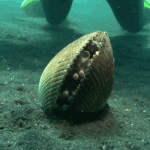
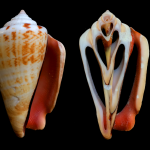



I love the textile cone shell! I never knew the poisonous part…
I hope this doesn’t come across the wrong way, but am I the only one who finds seashells depressing? The history you can infer in interesting, but other than that leaving out the animals themselves feels like showing a gallery of bird diversity featuring only their skeletons. I just imagine the seaside tourist traps full of baskets of shells…
I hope some posts (maybe nudibranchs) are not #SEASHELL centric.